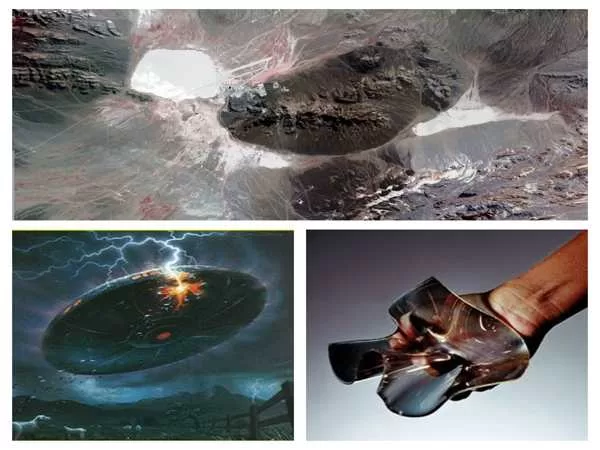For decades, the enigmatic material discovered at the Roswell crash site in 1947 has fascinated and perplexed researchers. Now, newly developed information sheds light on the origins and secretive dissemination of this so-called “memory metal.” The truth behind its development, the bizarre tests it underwent, and its integration into modern technology is more astonishing than anyone could have imagined.
The Roswell-Battelle Connection
In the aftermath of the Roswell incident, the U.S. military quickly moved the debris to Wright Patterson Air Force Base. There, Battelle Memorial Institute was contracted to study the material, focusing on a Nickel-Titanium alloy known as Nitinol. Reports indicate that this alloy could “remember” its original shape when deformed, a property that would later define “morphing metal.”
The evidence for this connection includes:
- Footnotes in military studies citing a Battelle report on memory metal conducted in the late 1940s.
- The actual reports are missing, despite repeated efforts to locate them.
- Statements from two USAF Generals about the composition of the debris and the analysis reports.
- Confessions from a senior-level Battelle scientist who analyzed the UFO crash debris.
Memory Metal’s Disguised History
While Europeans in the 1930s noted some alloys’ “pseudo-elasticity,” the studies conducted by Battelle in the late 1940s marked the first examination of a genuine “shape recovery” metal system by the U.S. military. These studies began immediately following the Roswell crash, where similar material was found.
Nitinol, the Nickel-Titanium memory alloy, was traditionally believed to have been discovered by accident in the early 1960s at the U.S. Naval Ordnance Lab. However, the truth is that the first efforts to examine this remarkable alloy occurred years earlier, at Battelle, under contract from Wright Patterson.
Discrepancies in the Official History
The exact year of Nitinol’s discovery is unclear, with various sources citing different years between 1958 and 1963. Even its co-inventors, Drs. Wang and Buehler, have provided conflicting accounts. The reasons given for its initial investigation also vary, from aeronautic applications to mine dismantling and submarine ship hull material.
Transfer of Technology and Maintaining Secrecy
The key to keeping the origin of such technology secret lies in compartmentalization. Only parts of the information are given out, never the whole picture, and always without revealing the backstory. This strategy ensures that scientists working on shape-recovery alloys today remain unaware of the hidden history behind their work.
NASA’s Role and the Space Connection
One of the ultimate goals of the memory metal research was its application in space. NASA’s involvement is confirmed by several pieces of evidence:
- William Buehler, Nitinol’s co-inventor, stated that NASA retained Battelle for further studies on Nitinol.
- An individual involved in “mental influence” tests on Nitinol revealed that NASA representatives were present during these tests.
- NASA sought to develop shape-recovery material for spacecraft, valuing its potential for creating “intelligent,” adaptive materials.
Mind-Over-Matter Tests
The unique properties of Nitinol prompted the U.S. government to conduct “psychokinesis” tests in the early 1970s. Scientists tested whether the material could be morphed using only the mind’s energy. These tests, which were partly successful, demonstrated that the mind’s energy could induce changes in Nitinol’s structure, much like the heat traditionally used.
Dr. Fred Wang, one of Nitinol’s co-inventors, conducted these tests. Despite his initial denial, evidence suggests that Wang was indeed present and involved in these experiments.
The Hidden Meaning of Memory Metal
Memory metal, with its ability to morph and adapt, symbolizes the potential for change and adaptation in the Universe. It reflects the interplay of matter, energy, and mind, revealing an infinite potential for transformation.
Conclusion
The story of Roswell’s memory metal is a tale of hidden history, scientific marvel, and the seamless blending of advanced technology into our world. It serves as a testament to human ingenuity and the mysteries that continue to unfold as we explore the boundaries of science and the unknown.

